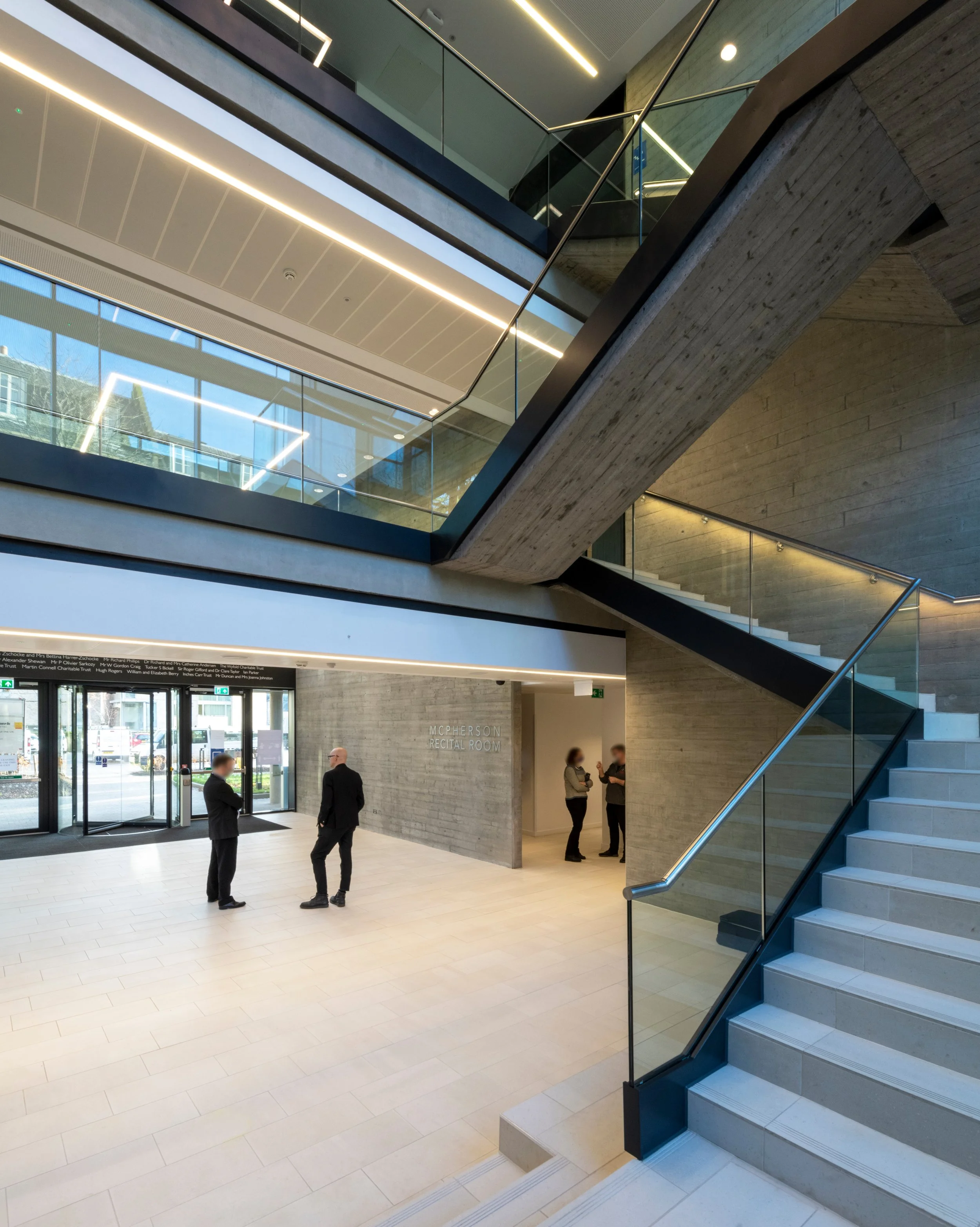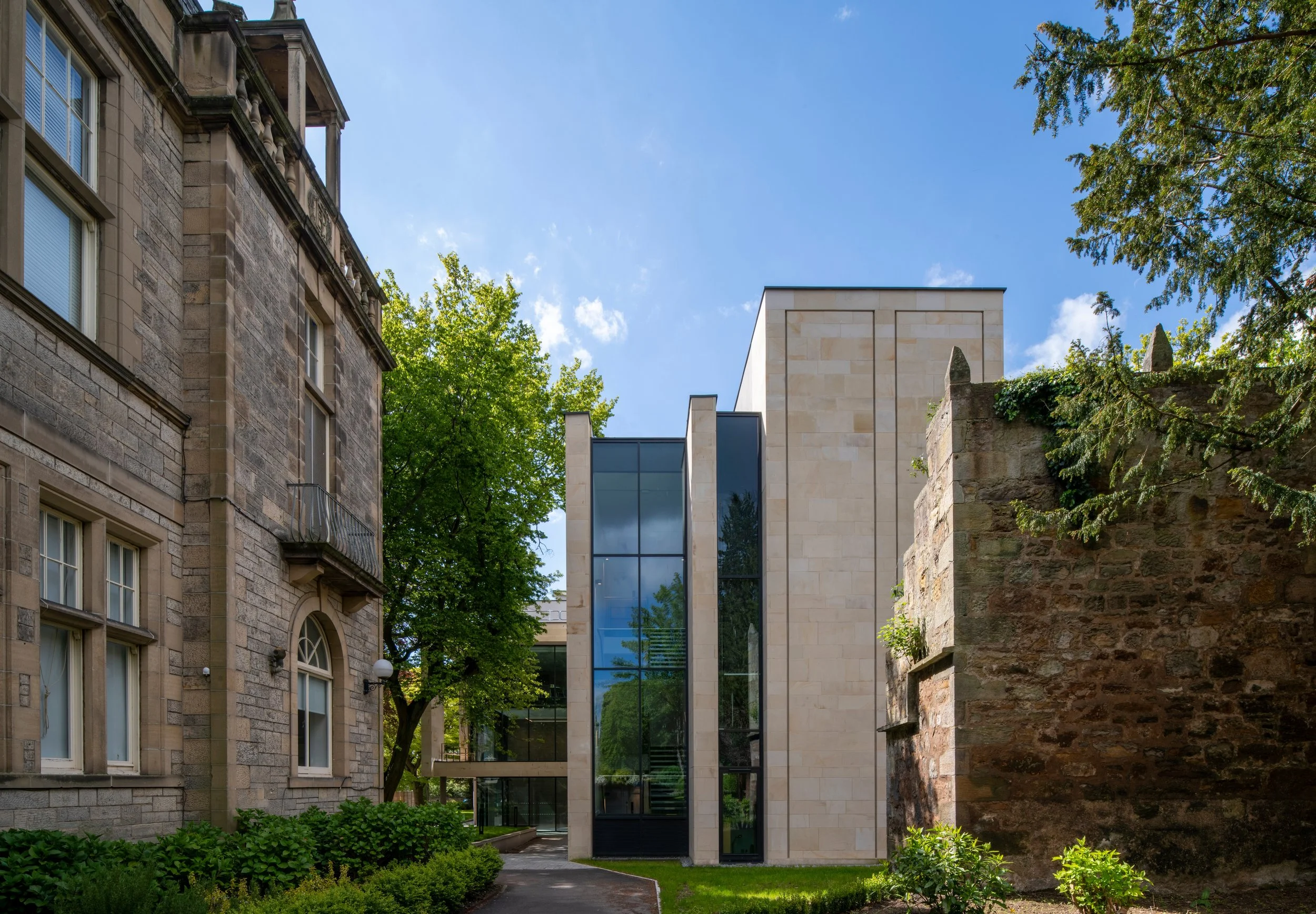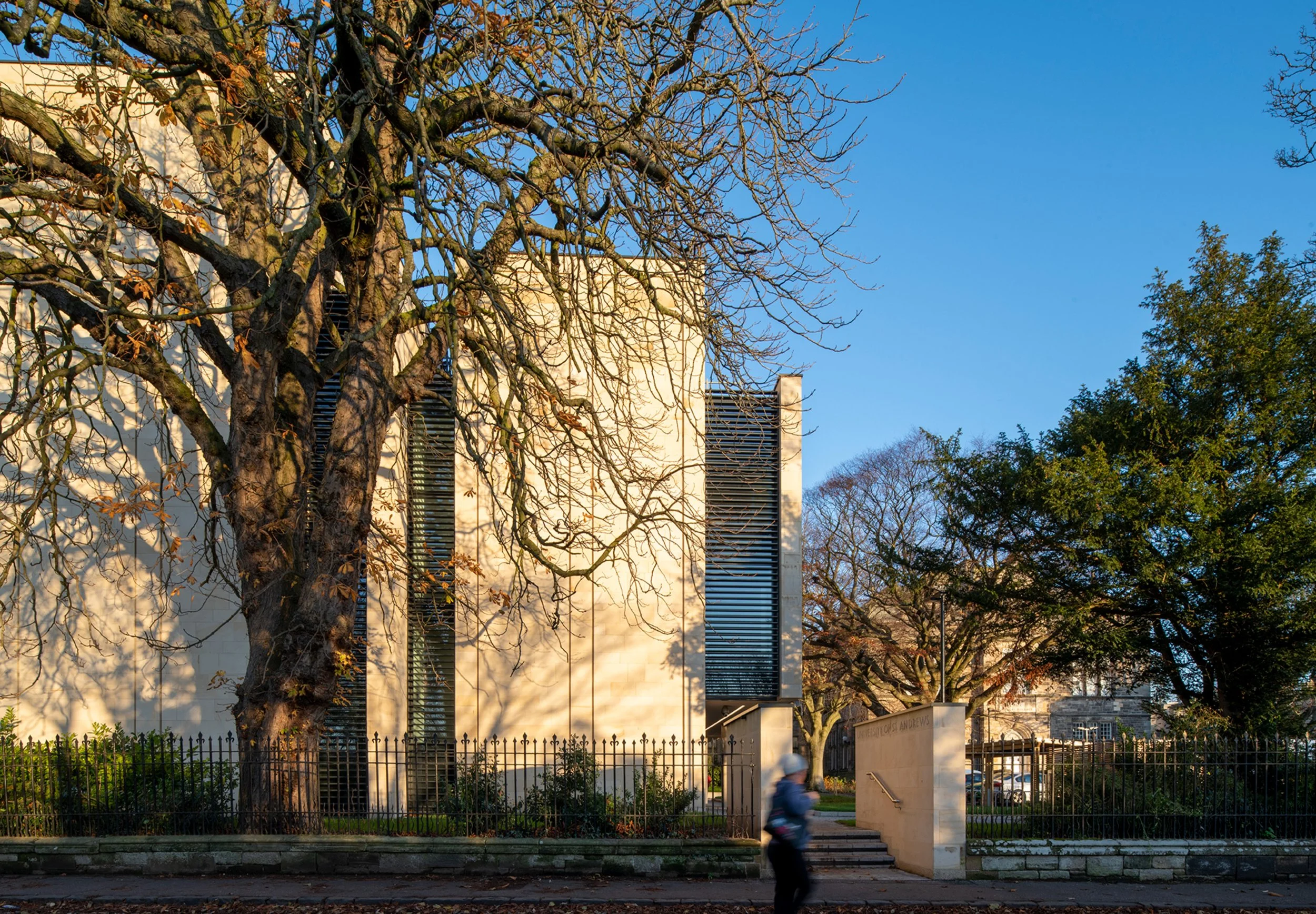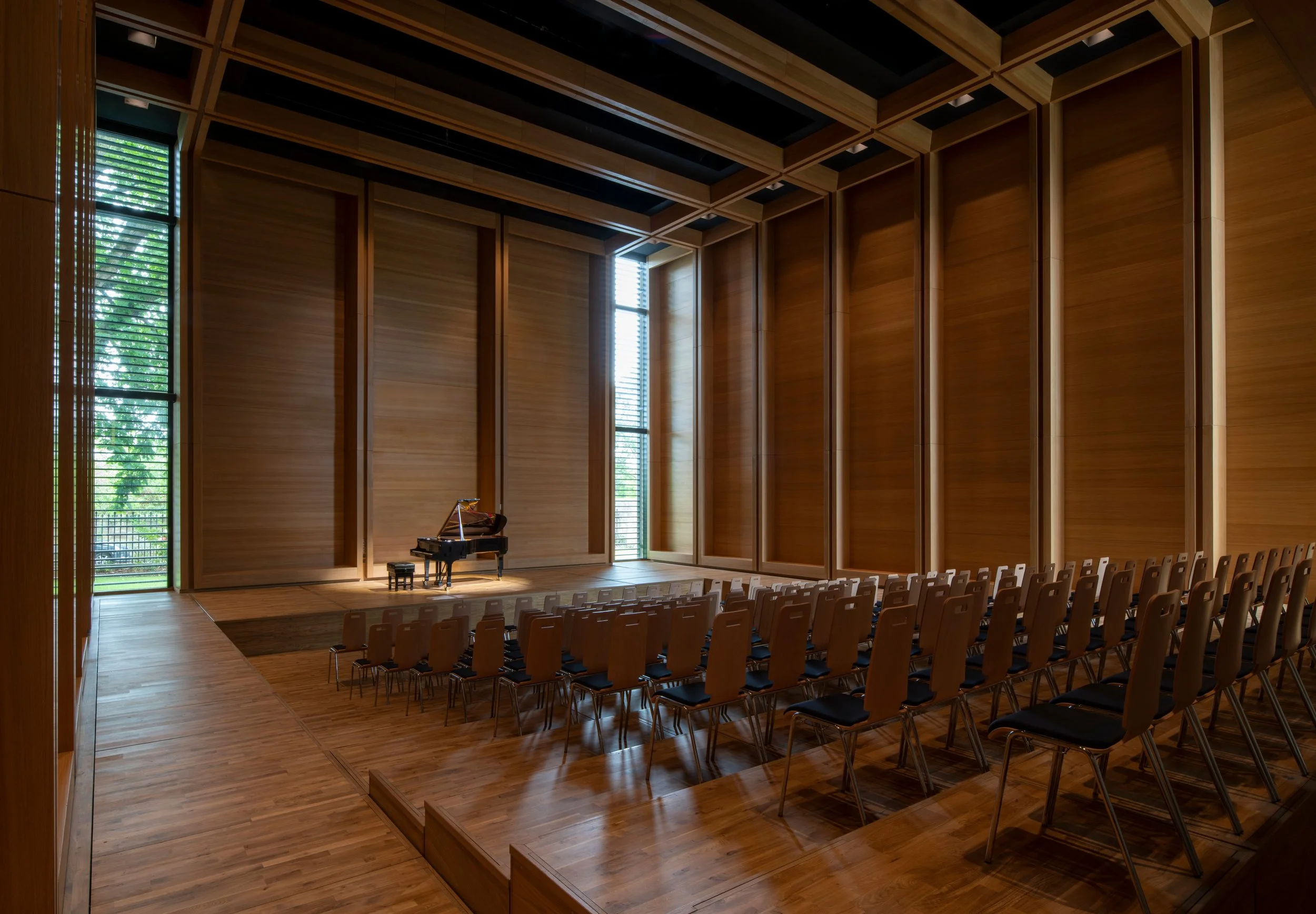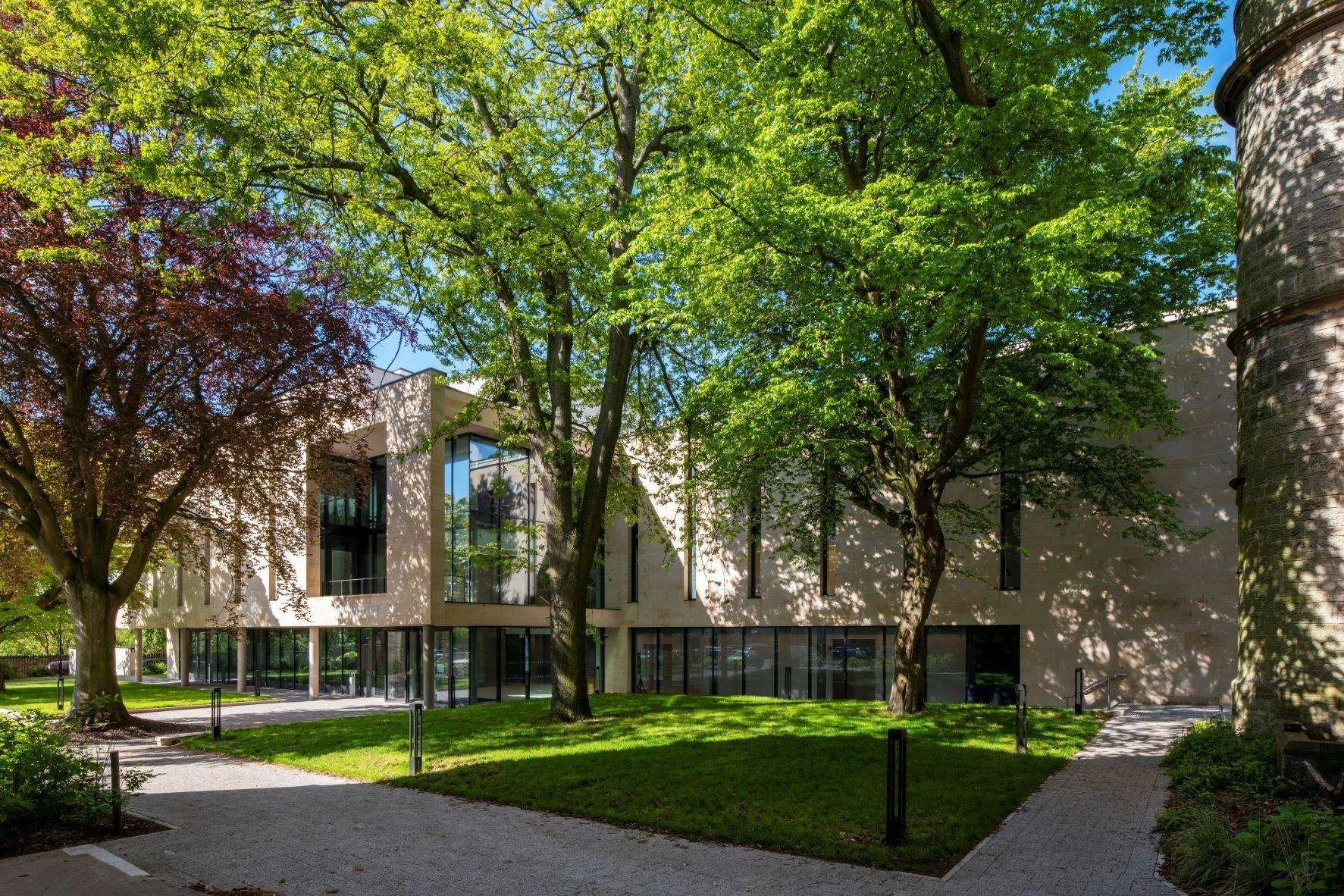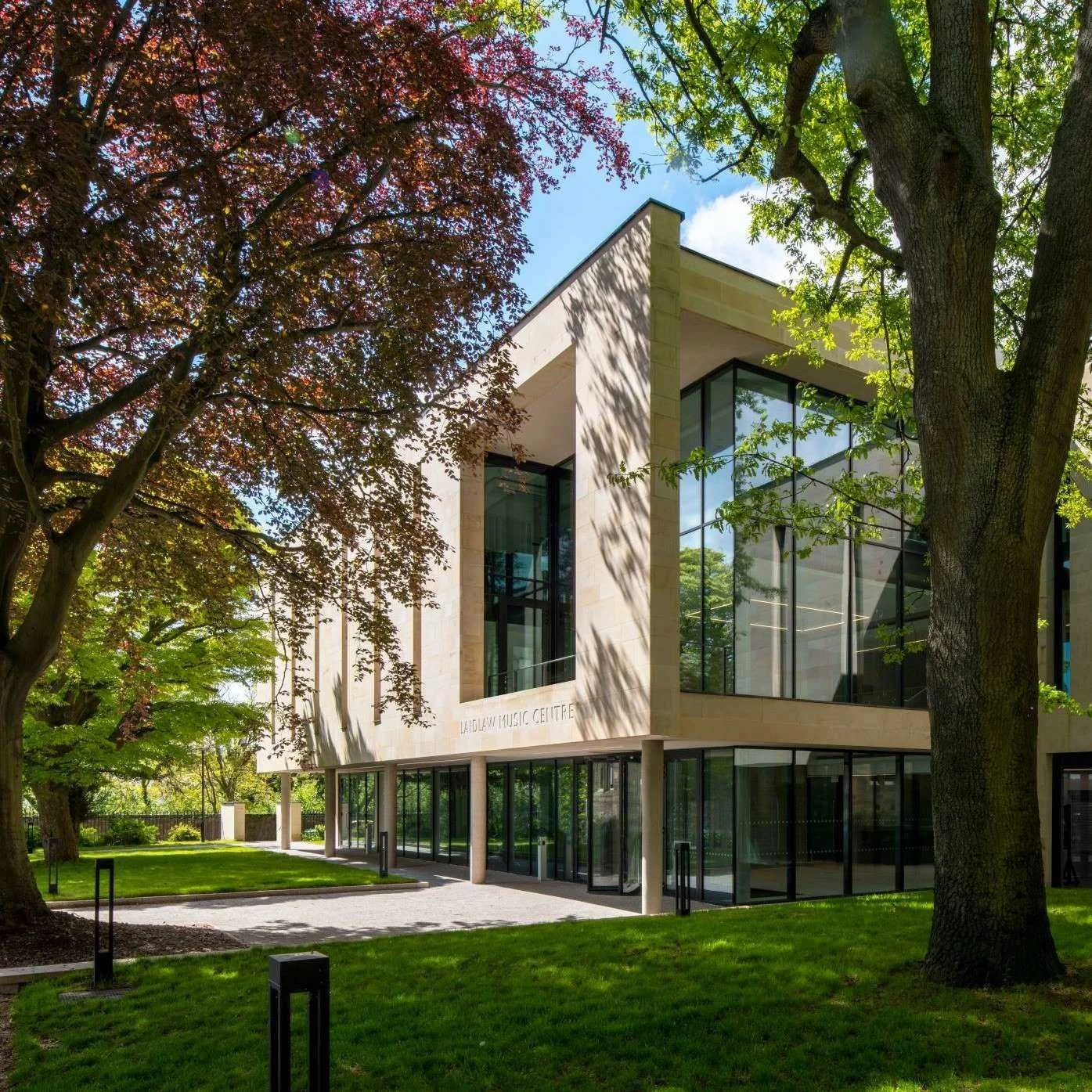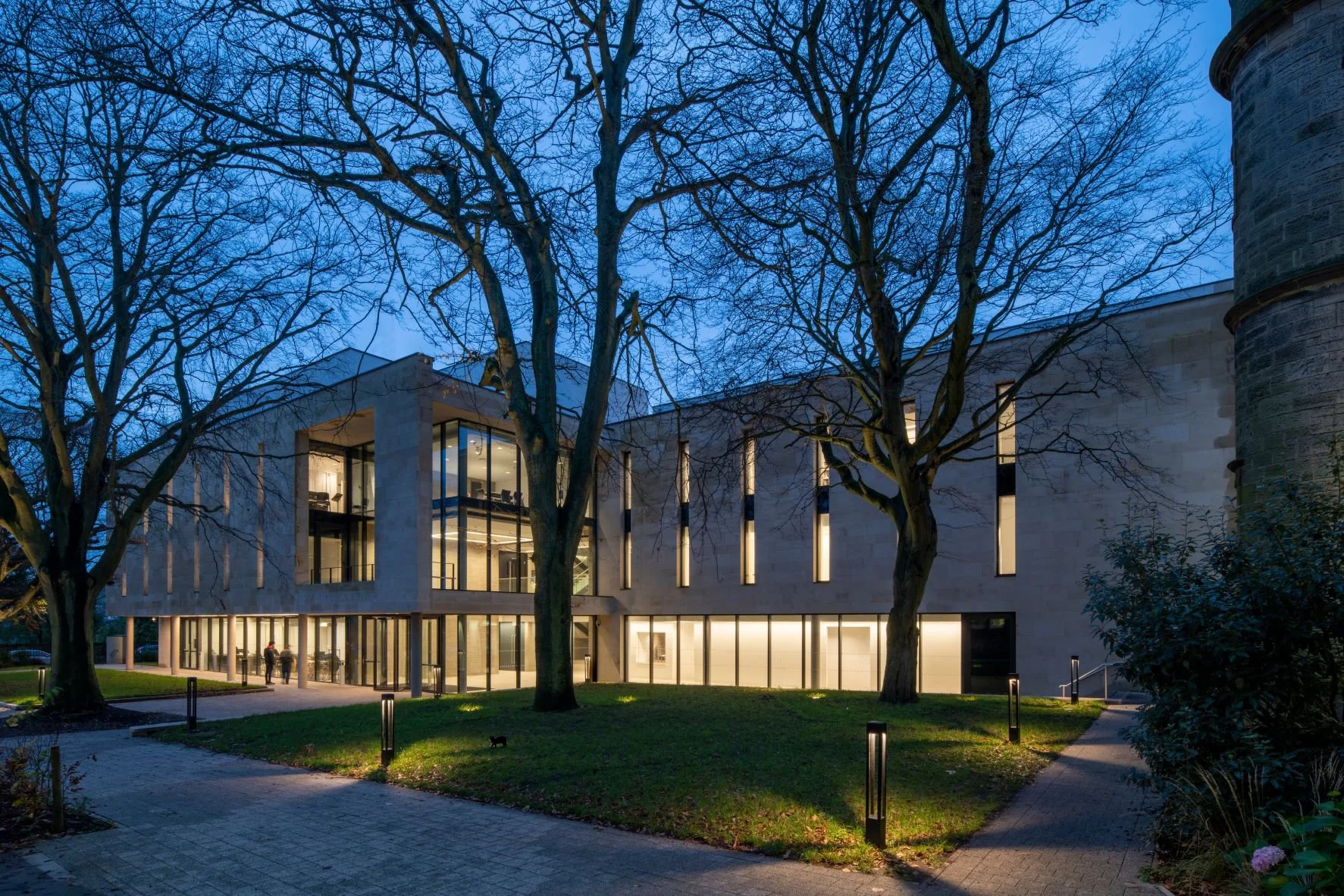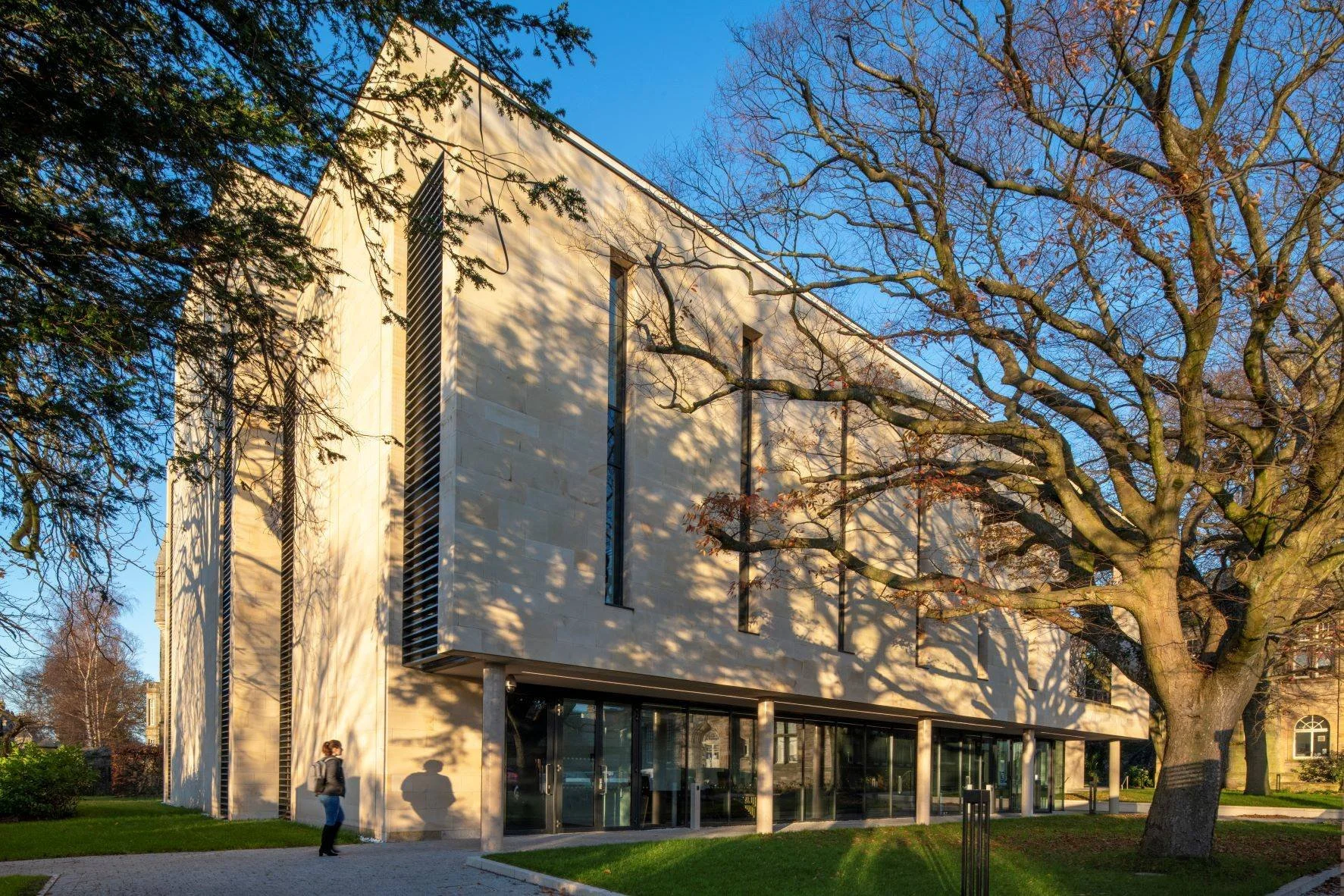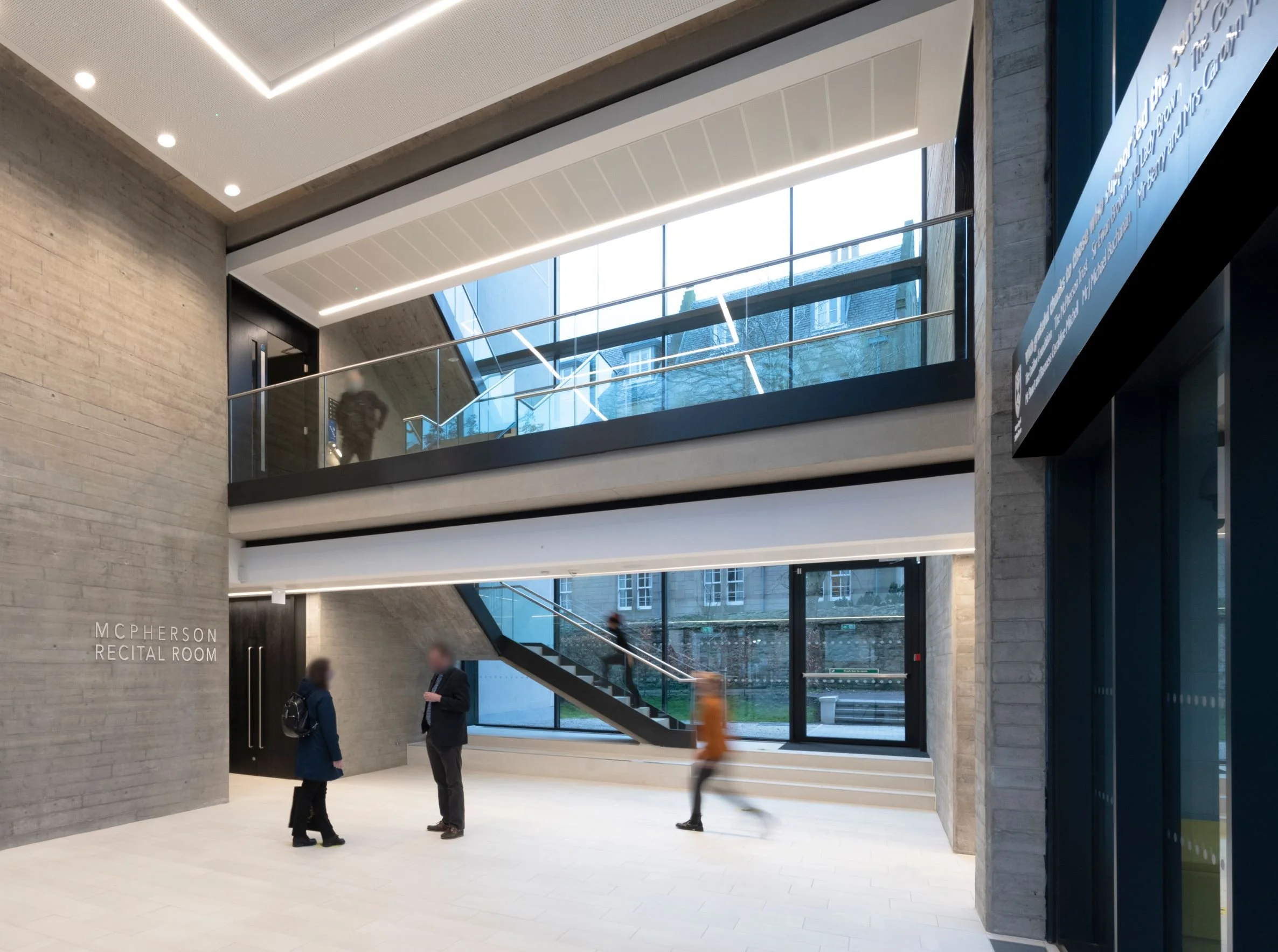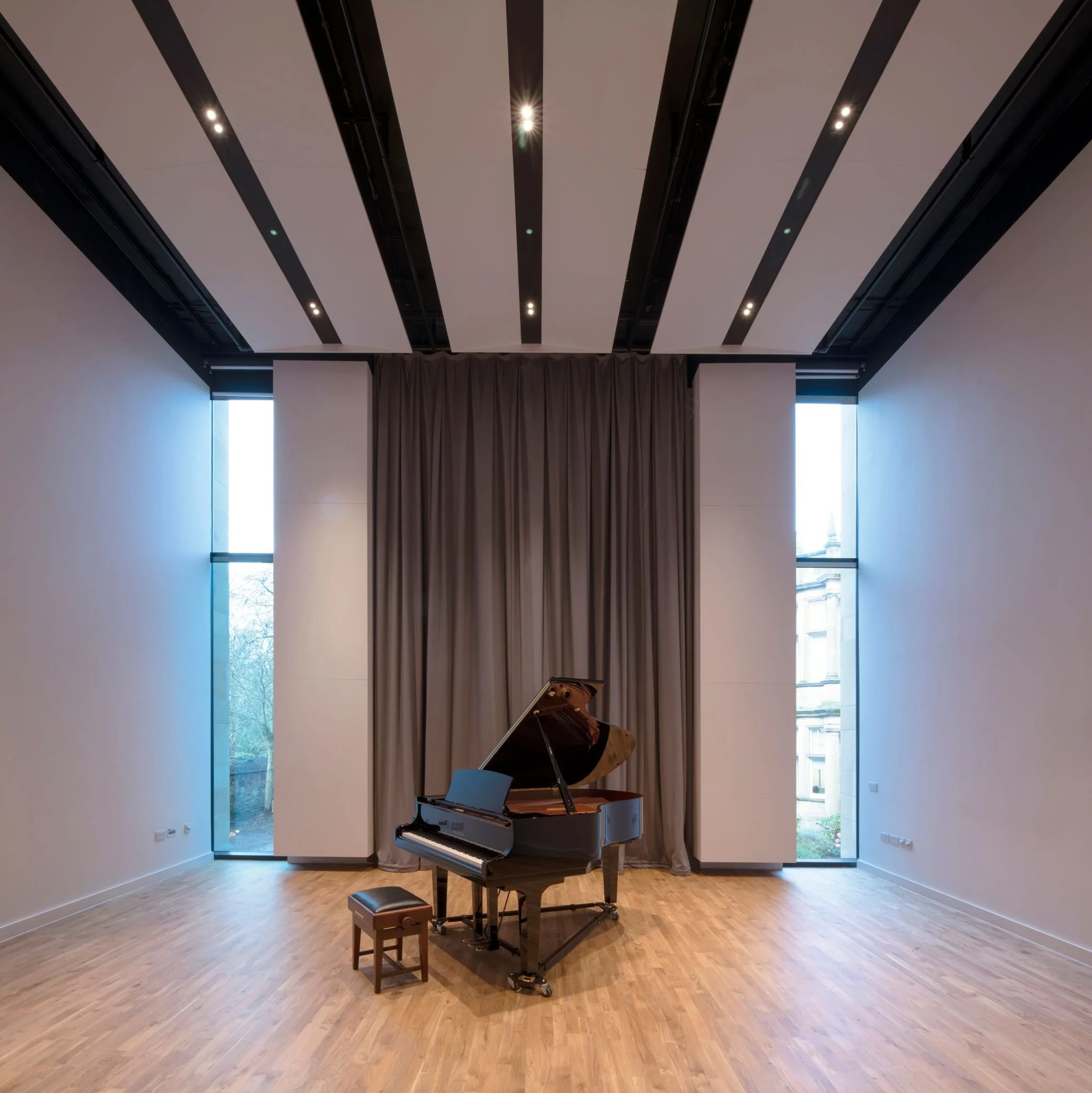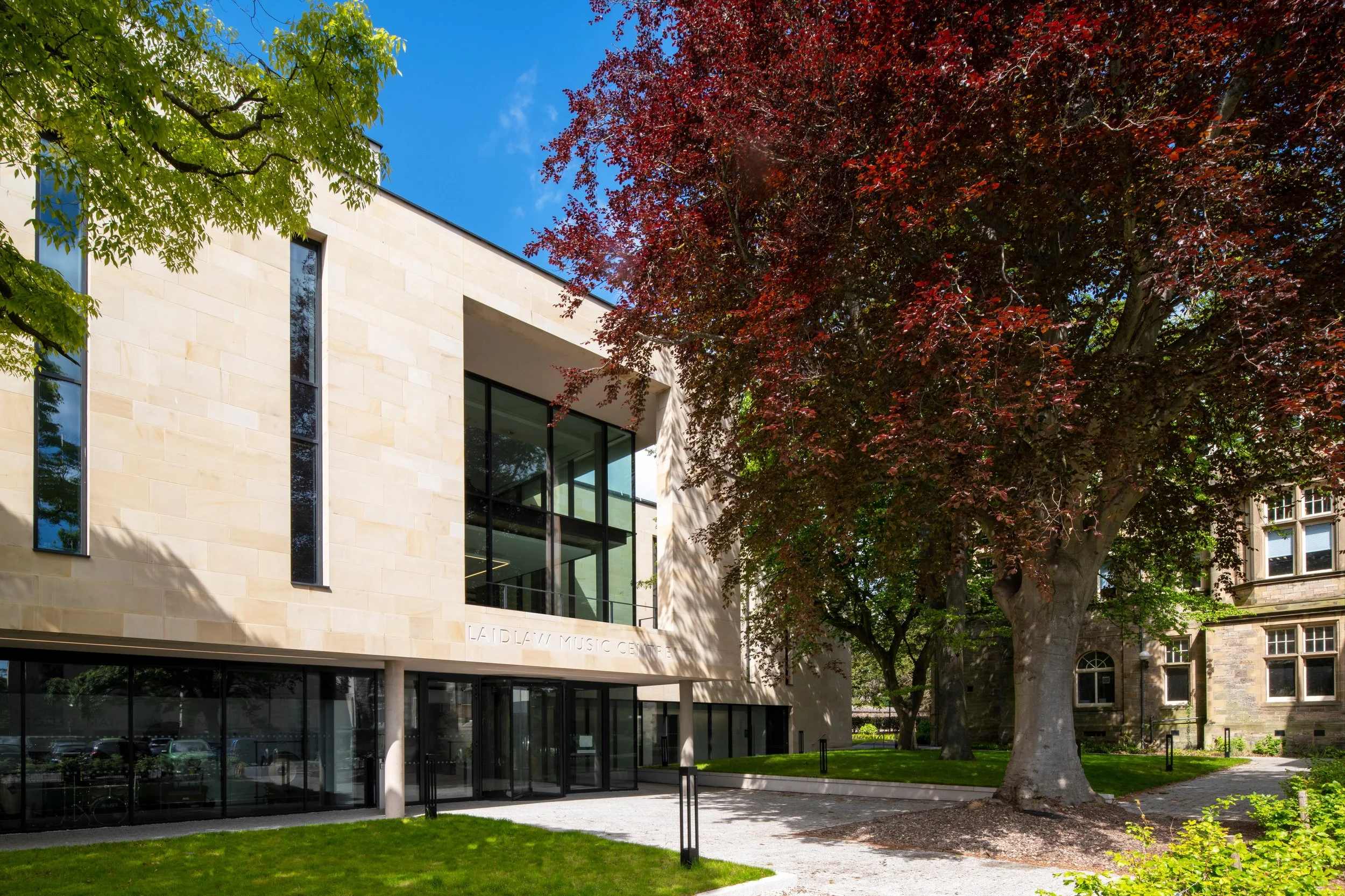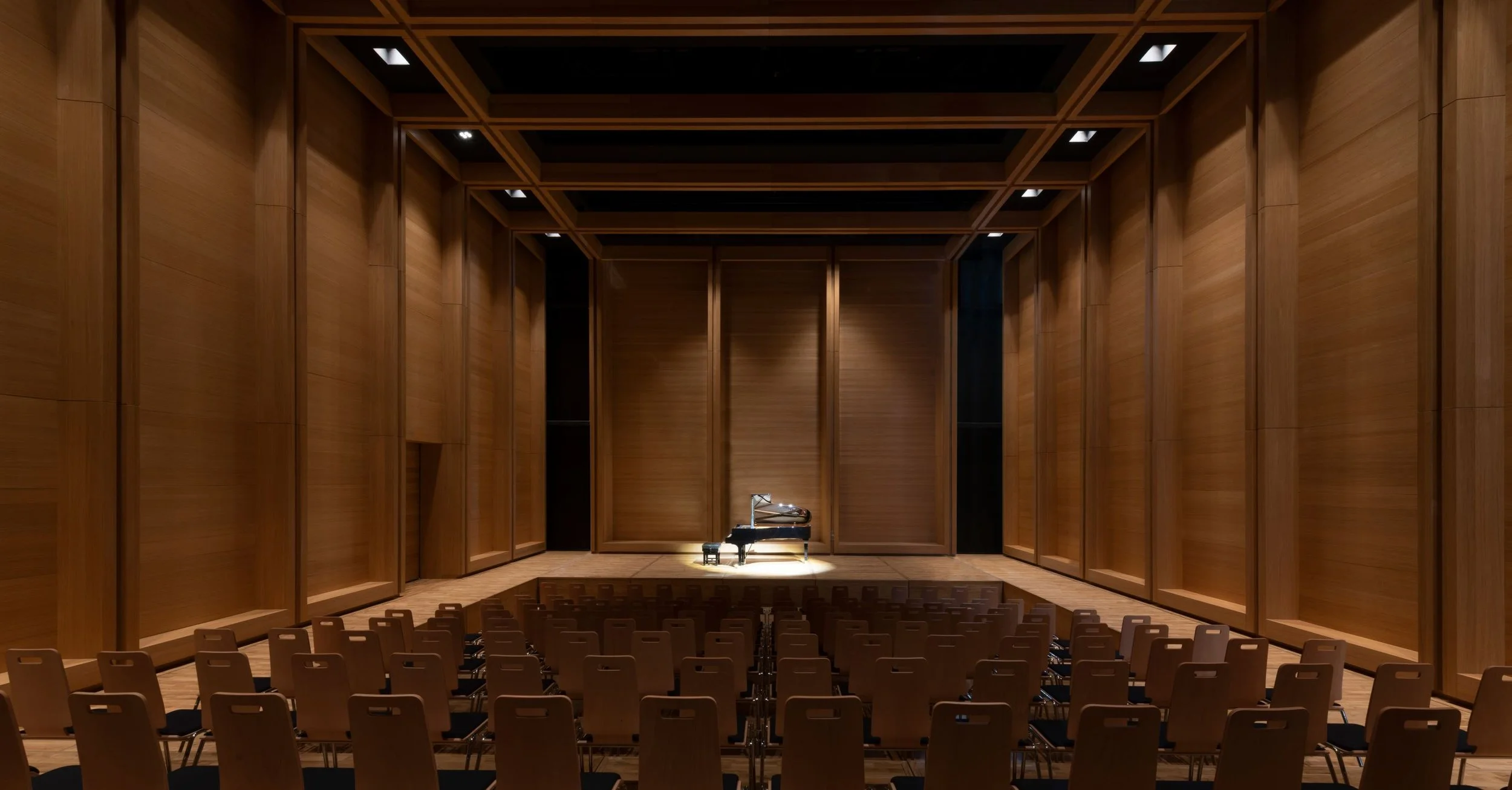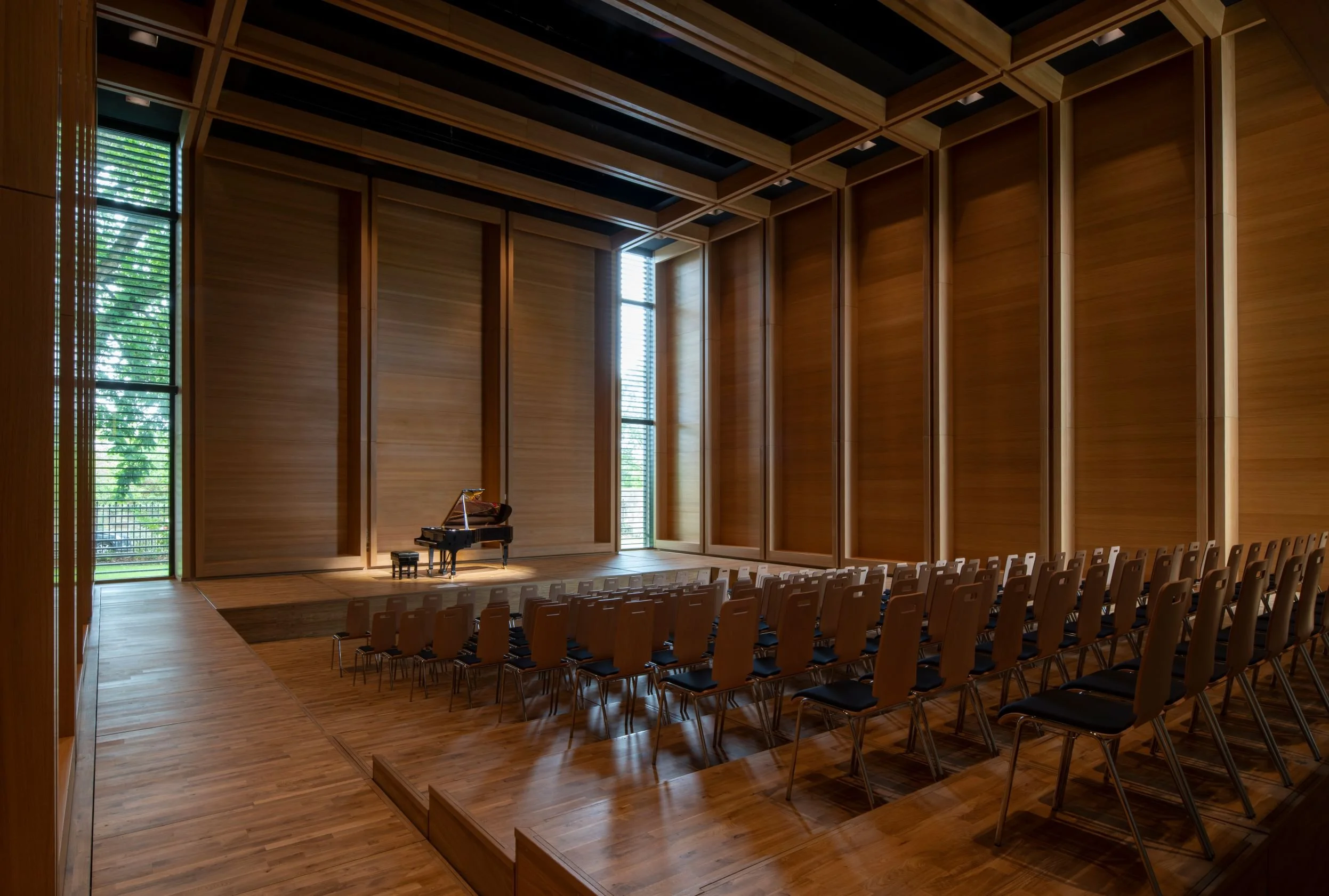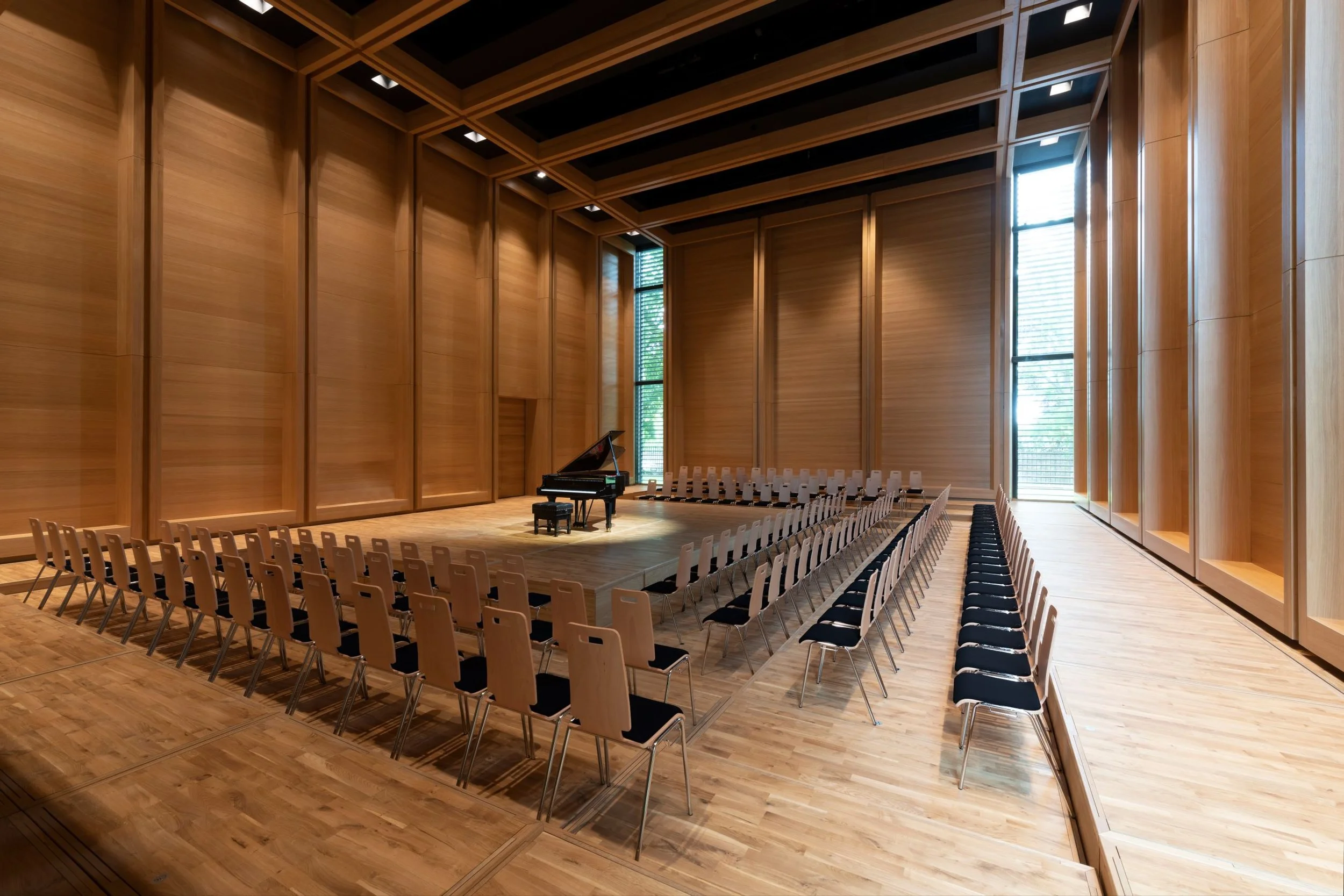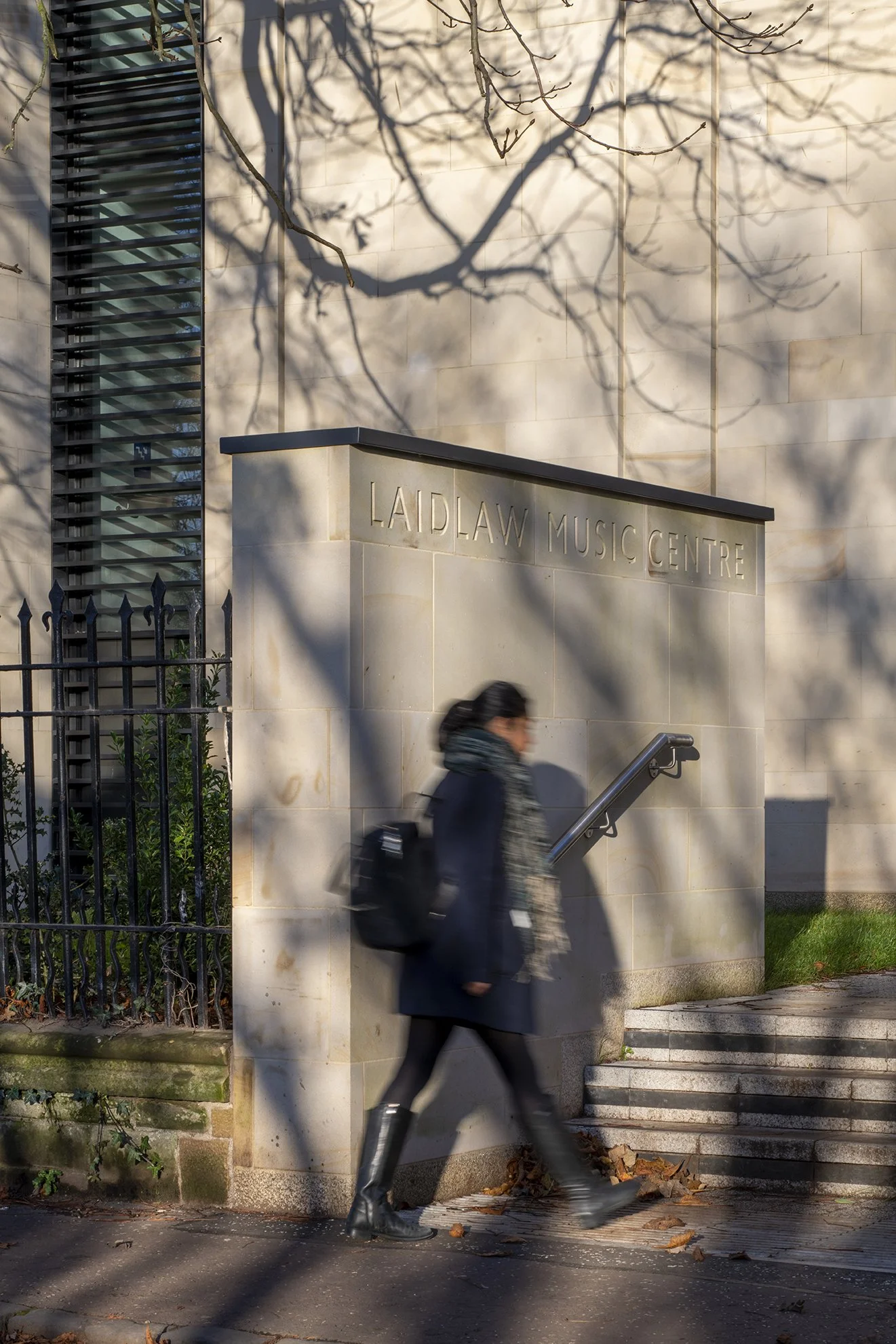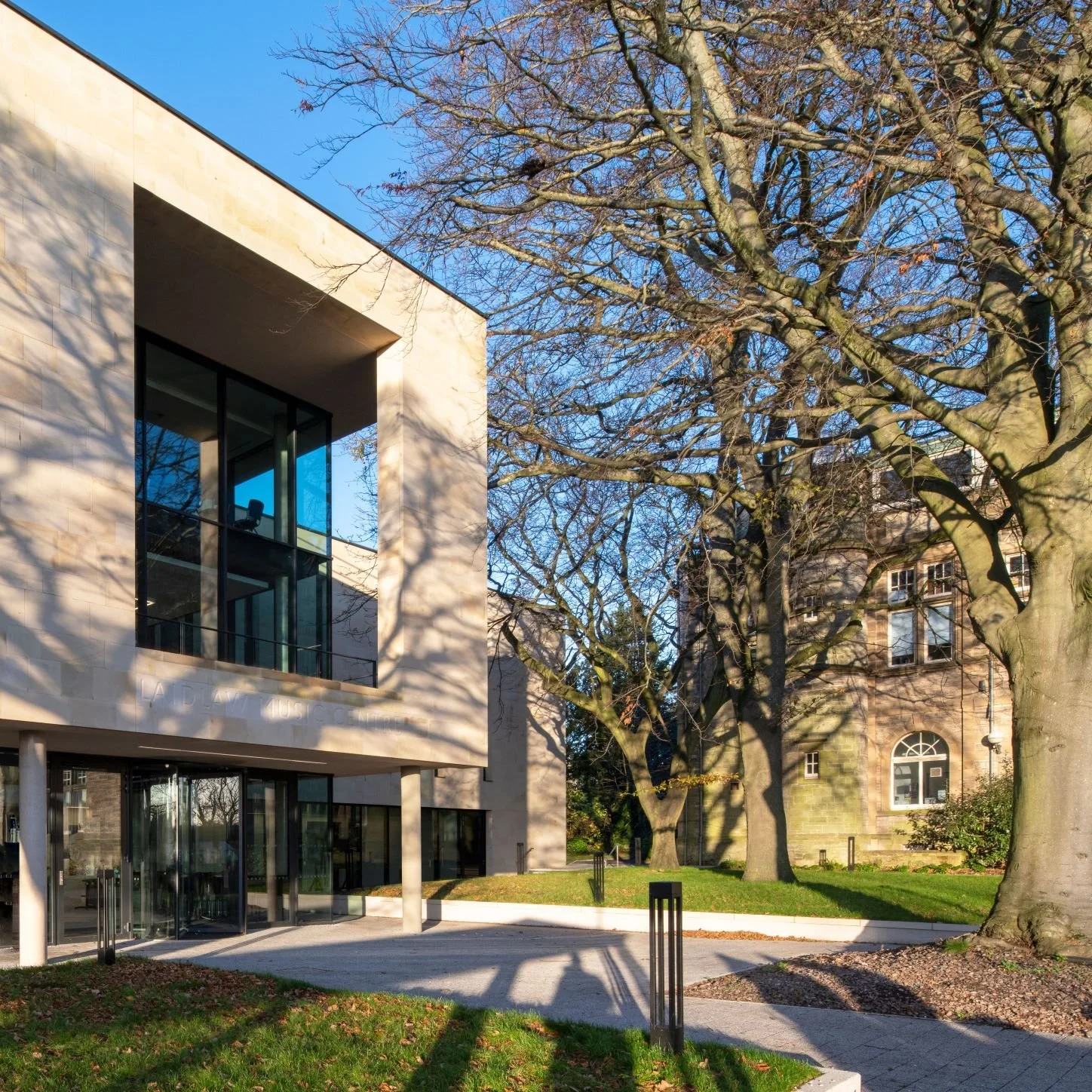University of St Andrews Music Centre
Client
University of St Andrews
Location
Scotland, UK
Status
Complete
Architect
Flanagan Lawrence
Project Manager, BREEAM Consultant
Gleeds
Cost Consultant
Turner + Townsend
Structural Engineer
Will Rudd Davidson
Building Services Consultant
WSP
Fire Engineer
JGA
Acoustics, AVI, Stage Engineering, Venue Consultant
IDIBRI
Arboriculturalist
Blebo Tree Surgery
Contractor
Graham
The Laidlaw Music Centre, is the first building dedicated to music in the University of St Andrews’ 600-year history, creating new opportunities for young people to connect with performing arts, providing an intimate performance venue, a flexible rehearsal space, and a high-tech recording facility. Open to staff, students, and the local community, the £12.5M Laidlaw Music Centre is an integral part of the St Andrews cultural quarter, attracting world-class performers and recitalists from around the globe.
It is located close to the medieval heart of the ancient Scottish University town. The University supports a thriving culture of performing groups and events run in collaboration with the Scottish Chamber Orchestra, the University’s Orchestra in Residence. The building enables community access, professional performance, tuition and rehearsal, and the study of music as part of the undergraduate degree programme. The project was won following an international design competition in 2016 and completed in 2021.
Each ‘performance’ space in the building is designed to be acoustically excellent, but with flexibility and ease of use in mind. The quality of the acoustic in these spaces will allow the musical excellence of rehearsals and performances to flourish for students, teachers, performers and audiences alike. This is a music centre for the community and the University – and as such its location with easy access for all from the town centre and its welcoming and outward looking appearance will create a new cultural venue in St Andrews. The main Rehearsal / Recital Hall is complemented by three large sectional rehearsal spaces, 10 individual practice rooms, a recording studio and amplified music suite.
A critical component of the project is the creation of a new quadrangle as a southern extension of the historic St Mary’s Quadrangle, the oldest part of the University dating back to the 1500’s. The focal point of the new public space is a century old arboretum. The space leftover between the mature tree canopies has defined the available site for the new building. The music centre is also positioned between three listed buildings, and the new architecture is designed to complement its historic neighbours in the Conservation Area.
Externally, the music centre is articulated as three wings of varying heights, each comprising alternating planes and volumes of local sandstone with interstitial glazing, which step in relation to the height of their historic neighbours up to the high point of the Recital Hall. The sandstone walls form a backdrop to the trees throughout the year and are deeply carved with vertical windows which bring light into the performance spaces within. The plan form of the building is designed to frame the new quad on two sides with the Bute Building opposite. Each of the three wings are linked by the central foyer which is glazed to allow views to the new Quadrangle and the arboretum. The entrance foyer is located at the meeting point of 4 public routes which intersect on the site, including a new gateway and colonnaded route into the historic quad from Queens Terrace to the south and the sequence of landscaped courtyards create the setting for the music centre and then link between the university and the town community.
The Oak lined McPherson Recital room is the world’s first chamber hall with a reverberation chamber. This allows the hall to be ‘tuned’ from nearly 4 seconds reverberation time for organ and choir work down to less than a second for more analytical rehearsal work. The room is sized to allow a symphony orchestra to rehearse and for chamber music recitals with audiences of up to 250. To allow the wide range of layouts the entire floor of the hall incorporates a grid of mechanised lifts which allow an infinite variety of spatial configurations at the push of a button - another world first.
The dramatic treble-height foyer is glazed on three sides to maximise views to the arboretum, the surrounding buildings and the public routes which approach the building. Long range views from the upper levels of the building open to the hills surrounding the site. The walls and staircase which frame the foyer are cast in-situ with the timber board marked concrete creating a tactile link between the trees outside and the wooden panelling within.
The building is designed to be BREEAM Excellent and highly environmentally sustainable, the hall features a highly innovative displacement ventilation system, with renewable energy from PV’s and LED lighting throughout.







